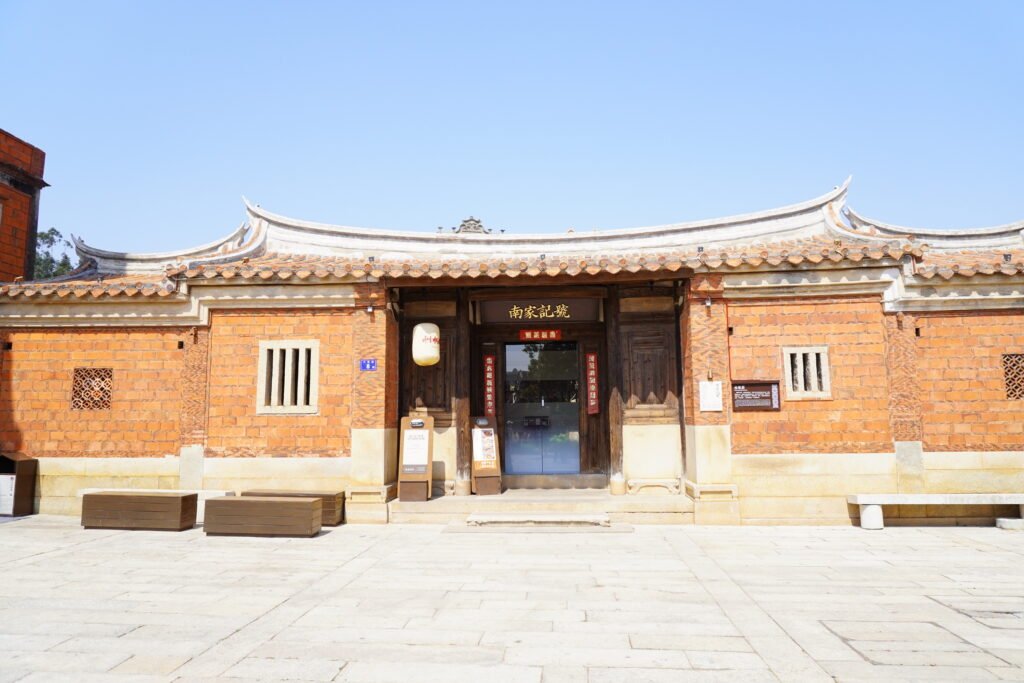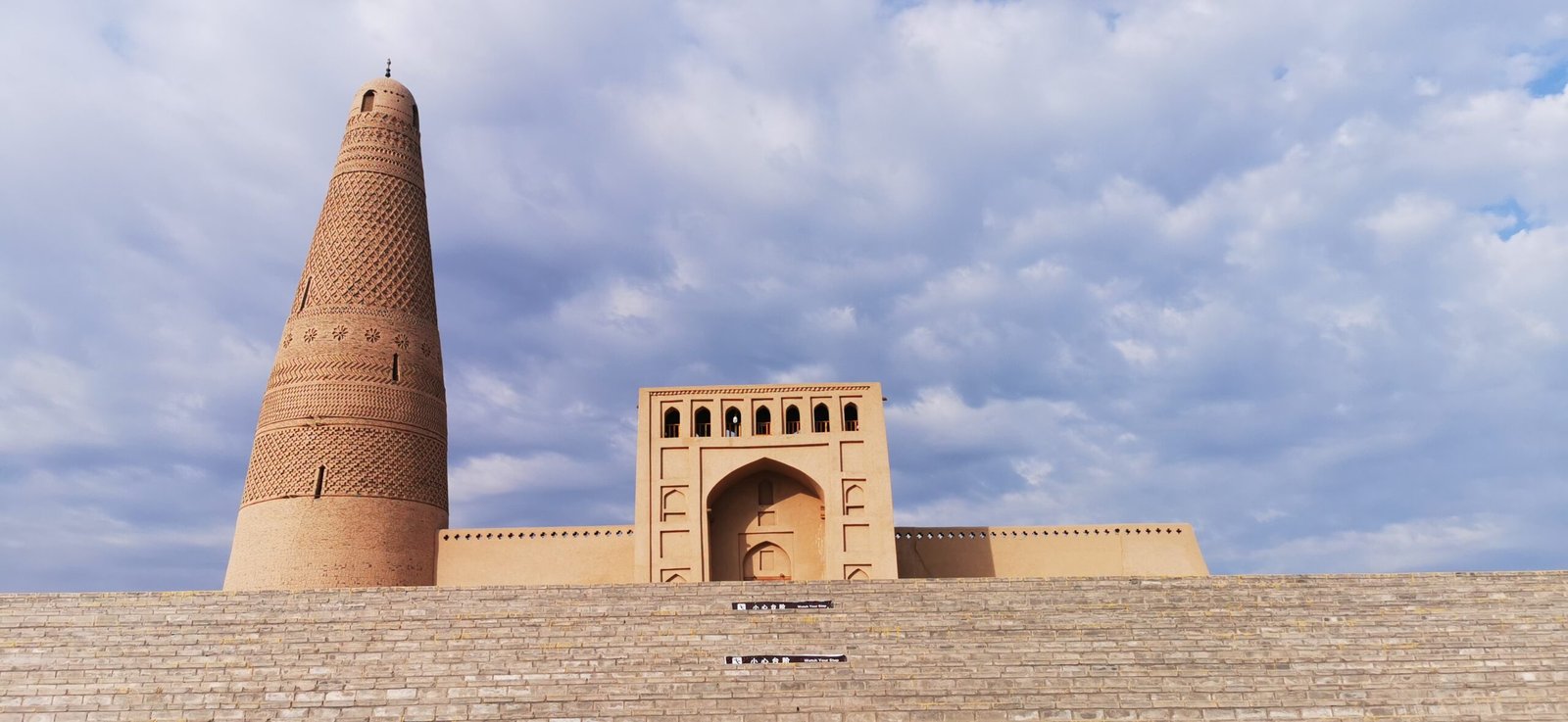Introduction to Fujian Red Brick Buildings
Fujian Province, located in southeastern China, is home to a rich architectural heritage that reflects its cultural, historical, and environmental influences. One of the most iconic features of Fujian’s traditional houses is the use of red brick, which has become a defining element in local architecture. These red brick buildings are aesthetically pleasing and practical, offering durability and resilience against the region’s humid and typhoon-prone climate.
This article will explore the architectural characteristics, historical significance, and cultural aspects of Fujian’s traditional red brick buildings, emphasizing their place within Chinese traditional architecture and their contribution to the traditional Chinese city landscape.

The Unique Characteristics of Fujian Red Brick Architecture
Distinctive Red Brick Material
The red bricks used in Fujian traditional buildings are made from local clay, which is rich in iron oxide. This material, when fired at high temperatures, produces the distinctive red hue that gives these buildings their signature look. Compared to grey bricks used in northern China, red brick buildings in Fujian offer a warmer, vibrant aesthetic that blends harmoniously with the lush green landscape.
The thermal properties of red bricks make them an excellent choice for Fujian traditional architecture. They help regulate indoor temperatures by keeping interiors cool in the summer and warm in the winter, an essential feature given Fujian’s subtropical climate. Additionally, red bricks are highly resistant to moisture, preventing mold and decay in the region’s humid environment.
The Art of Bricklaying and Decorative Patterns
Fujian’s red brick houses often showcase elaborate bricklaying techniques. Artisans create intricate decorative patterns using bricks of various shapes, incorporating geometric and floral motifs that reflect traditional Chinese artistic styles. The decorative brick carvings and relief sculptures add depth and uniqueness to each structure, making them visually captivating.

The craftsmanship of Fujian’s red brick structures extends beyond aesthetics. The bricklaying techniques include a precise arrangement of bricks to improve stability, ensuring buildings can withstand strong coastal winds and frequent typhoons. This resilience has made red brick architecture a practical and enduring choice for centuries.
Roof Structures and Wooden Elements
Another hallmark of Fujian red brick architecture is the integration of traditional Chinese roofing styles, including upturned eaves, glazed tiles, and wooden beams. The roofs are often designed to withstand heavy rains, a necessity given Fujian’s subtropical climate. Wooden beams, door frames, and latticed windows complement the red brick walls, creating a harmonious blend of materials that epitomize Chinese traditional architecture.
The curved rooflines of Fujian’s red brick houses are often adorned with decorative ridge ornaments that depict mythical creatures and auspicious symbols. These artistic elements not only enhance the beauty of the structures but also carry deep cultural and spiritual significance.
Types of Fujian Traditional Red Brick Buildings
Southern Min Style Residences
Among the most well-known red brick buildings in Fujian are the traditional Southern Min-style residences. These homes are characterized by their horse-head walls (马头墙), curved gables, and symmetrical courtyards. Often found in cities like Quanzhou, Xiamen, and Zhangzhou, these buildings highlight the influence of Southern Chinese architecture.
These residences were traditionally built for extended families, featuring multiple rooms and interconnected courtyards that foster communal living. The red brick walls not only provided protection against harsh weather but also served as a status symbol, indicating the wealth and social standing of the homeowners.
Hokkien Tulou: The Circular Red Brick Fortresses
Although tulou (土楼) are primarily built with rammed earth, many Hokkien tulou structures incorporate red bricks for decorative and structural purposes. These circular, multi-story buildings served as communal homes for Hakka and Southern Min communities, offering protection and fostering close-knit social living.

In some cases, red bricks were used in the tulou’s outer walls to reinforce structural integrity and enhance aesthetics. The interiors often featured red brick flooring, providing durability and a rustic charm that complemented the earthen construction.
Red Brick Temples and Clan Halls
Religious and ancestral buildings in Fujian also feature red brick construction. Temples dedicated to Mazu (妈祖), the goddess of the sea, as well as clan halls used for ancestral worship, frequently incorporate red bricks alongside intricate wood carvings and traditional Chinese roofing elements. These buildings not only serve religious purposes but also preserve the artistic and architectural heritage of Fujian.
Clan halls, which served as community centers for large family lineages, often featured elaborate red brick facades with intricate stone and wood carvings. These halls played a significant role in maintaining cultural traditions, hosting ceremonies, and fostering social cohesion.
Cultural and Historical Significance
Influence from Maritime Trade and Southern Chinese Traditions
Fujian’s strategic coastal location facilitated extensive trade with Southeast Asia, Taiwan, and beyond. This interaction led to architectural influences from overseas Chinese communities, incorporating design elements that blend traditional Chinese architecture with tropical adaptations. The prominence of red brick buildings in coastal cities like Xiamen and Quanzhou underscores this maritime connection.
Merchants who amassed wealth through maritime trade often invested in grand red brick mansions, which showcased a fusion of Western and Chinese design elements. This blend of architectural influences can still be observed in Fujian’s historic districts today.
Red Brick Buildings in the Traditional Chinese City
In historic Chinese traditional cities, architectural styles were often dictated by regional materials and climate conditions. Fujian’s red brick houses became a defining characteristic of its traditional urban landscape, influencing the aesthetic of ancient streets, marketplaces, and residential neighborhoods.
The presence of red brick architecture in Fujian’s urban areas contributed to the development of unique townscapes. Traditional red brick alleyways (巷道) provided shaded walkways, offering relief from the heat while enhancing the charm of historic neighborhoods.

Preservation and Modern Adaptations
Conservation Efforts
Despite modernization, efforts are being made to preserve Fujian’s red brick heritage. Conservation projects focus on restoring historical buildings while maintaining their original materials and craftsmanship. Many red brick houses have been repurposed as museums, cultural centers, and boutique inns, ensuring their legacy endures for future generations.
Government initiatives and private organizations are also working to document and protect Fujian’s red brick buildings. Heritage tourism has played a crucial role in raising awareness, drawing visitors who appreciate the architectural and historical value of these structures.
Red Brick in Contemporary Architecture
Modern architects in Fujian are reinterpreting red brick design by incorporating traditional elements into contemporary structures. The fusion of red brick aesthetics with modern materials creates a seamless link between past and present, highlighting the timeless appeal of this architectural style.
Innovative construction techniques now allow architects to use red bricks in combination with glass, steel, and concrete, creating visually striking designs that maintain a strong connection to traditional Chinese architecture.
Conclusion
Fujian’s traditional red brick buildings are a remarkable representation of Chinese traditional architecture, embodying the region’s history, culture, and artistry. From elegant Southern Min residences to fortified Hokkien tulou, these structures tell the story of Fujian’s architectural evolution. As preservation efforts continue, the unique charm of red brick buildings will remain an integral part of China’s traditional cityscapes, ensuring that this rich heritage is cherished for generations to come.
For more insights into Chinese ancient architecture and the beauty of Fujian’s traditional buildings, explore our articles at Archinatour.com.

